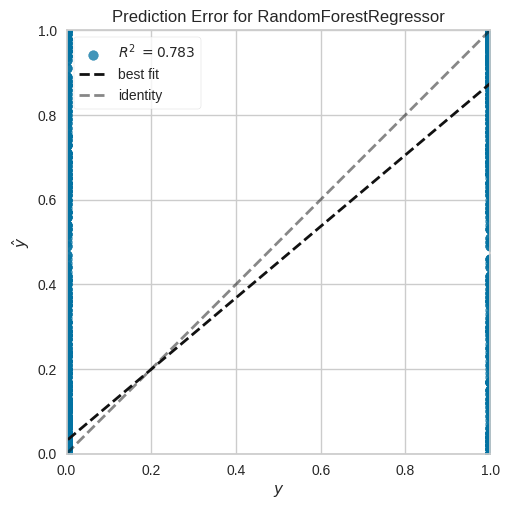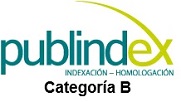
DOI:
https://doi.org/10.14483/23448393.21846Publicado:
2024-08-04Número:
Vol. 29 Núm. 2 (2024): Mayo-agostoSección:
Ingeniería CivilCommunity-Based Early Warning System Model for Stream Overflow In Barranquilla
Modelo de sistema de alerta temprana para desbordamiento de arroyos en barranquilla basado en la comunidad
Palabras clave:
stream overflow, social network, machine learning, natural language processing (en).Palabras clave:
arroyos, redes sociales, aprendizaje automático, procesamiento de lenguaje natural (es).Descargas
Resumen (en)
Context: This work aims to design and create a community-based early warning model as an alternative for the mitigation of disasters caused by stream overflow in Barranquilla (Colombia). This model is based on contributions from social networks, which are consulted through their API and filtered according to their location.
Methods: With the information collected, cleaning and debugging are performed. Then, through natural language processing techniques, the texts are tokenized and vectorized, aiming to find the vector similarity between the processed texts and thus generating a classification.
Results: The texts classified as dealing with stream overflow are processed again to obtain a location or assign a default one, in order to for them to be georeferenced in a map that allows associating the risk zone and visualizing it in a web application to monitor and reduce the potential damage to the population.
Conclusions: Three classification algorithms were selected (random forest, extra trees, and k-neighbors) to determine the best classifier. These three algorithms exhibited the best performance and R2 regarding the data processed in the regressions. These algorithms were trained, with the k-neighbor algorithm exhibiting the best performance.
Resumen (es)
Contexto: Este trabajo tiene como objetivo diseñar y crear un modelo de alerta temprana basado en la comunidad como alternativa para la mitigación de desastres causados por el desbordamiento de arroyos en Barranquilla (Colombia). Este modelo se basa en contribuciones de redes sociales, que se consultan a través de su API y se filtran según su ubicación.
Métodos: Con la información recogida, se realiza una limpieza y depuración. Luego, mediante técnicas de procesamiento de lenguaje natural, los textos se tokenizan y vectorizan, buscando encontrar la similitud vectorial entre los textos procesados y así generar una clasificación.
Resultados: Los textos clasificados como relacionados con el desbordamiento de arroyos se procesan nuevamente para obtener una ubicación o asignar una por defecto, con el fin de georreferenciarlos en un mapa que permita asociar la zona de riesgo y visualizarla en una aplicación web, en aras de monitorear y reducir el daño potencial a la población.
Conclusiones: Se seleccionaron tres algoritmos de clasificación (bosque aleatorio, árboles extra y k-vecinos) para determinar el mejor clasificador. Estos tres algoritmos mostraron el mejor rendimiento y R2 con respecto a los datos procesados en las regresiones. Estos algoritmos fueron entrenados, y se encontró que el algoritmo k-vecinos tuvo el mejor rendimiento.
Referencias
H. D. Van Strahlen Bartel, “Estudio de la problemática de los arroyos urbanos de la cuenca El Rebolo (Barranquilla, Colombia) y propuesta de soluciones,” Master’s thesis, Universitat Politècnica de València, 2017. [Online]. Available http://hdl.handle.net/10251/90068
H. Ávila, “Perspectiva del manejo del drenaje pluvial frente al cambio climático-caso de estudio: ciudad de Barranquilla, Colombia,” Rev. Ing., vol. 36, pp. 54-59, 2012. http://www.scielo.org.co/pdf/ring/n36/n36a11.pdf
J. A. Sepúlveda Ojeda, “Aplicación web para la visualización de sensores del sistema de alertas tempranas de los arroyos de Barranquilla-Colombia,” Rev. Espacios, vol. 38, no. 47, p. 17, 2017. http://hdl.handle.net/11323/2024
L. J. Pérez Flórez and J. S. Hernández Miranda, “Diseño del modelo económico energético para un sistema de alerta temprana (MEESAT) para los arroyos de Barranquilla,” undergraduate thesis, Universidad de la Costa, 2015. http://hdl.handle.net/11323/4899
M. Acosta-Coll, F. Ballester-Merelo, and M. Martínez-Peiró, “Early warning system for detection of urban pluvial flooding hazard levels in an ungauged basin,” Nat. Hazards, vol. 92, pp. 1237-1265, 2018. https://doi.org/10.1007/s11069-018-3249-4
M. A. Coll, “Sistemas de alerta temprana (SAT) para la reducción del riesgo de inundaciones súbitas y fenómenos atmosféricos en el área metropolitana de Barranquilla,” Sci. Tech., vol. 18, no.o 2, pp. 303-308, 2013. https://revistas.utp.edu.co/index.php/revistaciencia/article/view/8661/5411
A. Chatfield and U. Brajawidagda, “Twitter tsunami early warning network: A social network analysis of Twitter information flows,” in 23rd Australasian Conf. Info. Syst., 2012, pp. 1-10. https://core.ac.uk/download/pdf/301388984.pdf
Gobernacion del Atlántico, “Plan departamental de gestión del riesgo Atlántico (Colombia),” 2021. [Online]. Available: http://repositorio.gestiondelriesgo.gov.co/handle/20.500.11762/392?locale-attribute=es
X, “Use Cases, Tutorials, & Documentation,” X Developer Platform. https://developer.twitter.com/en (accessed July 8, 2023).
H. Müller and J. C. Freytag, “Problems, methods, and challenges in comprehensive data cleansing”, 2005. [Online]. Available: https://tarjomefa.com/wp-content/uploads/2015/06/3229-English.pdf
Y. Valdés Hernández and D. Marmol Lacal, “DBAnalyzer 2.0, sistema para analizar bases de datos libre,” undergraduate thesis, Universidad de las Ciencias Informáticas, 2008. https://repositorio.uci.cu/jspui/bitstream/ident/TD_1287_08/1/TD_1287_08.pdf
E. Estoque Cabrera, L. Baró Galán, and M. E. Escobar Pompa, “Implementación de algoritmos para la limpieza de datos,” undergraduate thesis, Universidad de las Ciencias Informáticas, 2015. https://repositorio.uci.cu/jspui/handle/ident/8774
I. Zeroual and A. Lakhouaja, “Data science in light of natural language processing: An overview,” Procedia Comput. Sci., vol. 127, pp. 82-91, 2018. https://doi.org/10.1016/j.procs.2018.01.101
G. D. Buzai and C. A. Baxendale, “Análisis exploratorio de datos espaciales,” Geogr. Sist. Inf. Geográfica, no. 1, pp. 1-11, 2009. https://ri.unlu.edu.ar/xmlui/bitstream/handle/rediunlu/702/Buzai_An%C3%A1lisis%20Exploratorio%20de%20Datos%20Espaciales.pdf?sequence=1&isAllowed=y
P. Carranza and J. Fuentealba, “Una introducción al análisis exploratorio de datos por medio de Google Analytics,” Yupana Rev. Educ. Matemática UNL, vol. 7, pp. 53-65, 2013. https://doi.org/10.14409/yu.v1i7.4262
Z. Jianqiang and G. Xiaolin, “Comparison research on text pre-processing methods on twitter sentiment analysis,” IEEE Access, vol. 5, pp. 2870-2879, 2017. https://doi.org/10.1109/ACCESS.2017.2672677
E. Kouloumpis, T. Wilson, and J. Moore, “Twitter sentiment analysis: The good the bad and the omg!,” in Proc. Int. AAAI Conf. Web Soc. Media, 2011, pp. 538-541. https://doi.org/10.1609/icwsm.v5i1.14185
“Spanish · spaCy Models Documentation,” SpaCy. https://spacy.io/models/es (accessed July 16, 2023).
S. Quarteroni, “Natural language processing for industry: ELCA’s experience,” Inform.-Spektrum, vol. 41, no. 2, pp. 105-112, 2018. https://doi.org/10.1007/s00287-018-1094-1
A. Yadav, A. Patel, and M. Shah, “A comprehensive review on resolving ambiguities in natural language processing,” AI Open, vol. 2, pp. 85-92, Jan. 2021. https://doi.org/10.1016/j.aiopen.2021.05.001
N. Kaur, V. Pushe, and R. Kaur, “Natural language processing interface for synonym,” Int. J. Comput. Sci. Mob. Comput., vol. 3, n.o 7, pp. 638-642, 2014. https://ijcsmc.com/docs/papers/July2014/V3I7201499a13.pdf
M. M. E. Torres and R. Manjarrés-Betancur, “Asistente virtual académico utilizando tecnologías cognitivas de procesamiento de lenguaje natural,” Rev. Politécnica, vol. 16, no. 31, pp. 85-96, 2020. https://doi.org/10.33571/rpolitec.v16n31a7
A. Gelbukh, “Procesamiento de lenguaje natural y sus aplicaciones,” Komputer Sapiens, vol. 1, pp. 6-11, 2010. https://www.gelbukh.com/CV/Publications/2010/Procesamiento%20de%20lenguaje%20natural%20y%20sus%20aplicaciones.pdf
L. Deng, “Deep learning: from speech recognition to language and multimodal processing,” APSIPA Trans. Signal Inf. Process., vol. 5, no. 1, Jan. 2016. https://doi.org/10.1017/ATSIP.2015.22
F. Ramos and J. Vélez, “Integración de técnicas de procesamiento de lenguaje natural a través de servicios web,” undergraduate thesis, Universidad Nacional del Centro de la Provincia de Buenos Aires, 2016. [Online]. Available: https://www.ridaa.unicen.edu.ar/handle/123456789/644
P. Johri, S. K. Khatri, A. T. Al-Taani, M. Sabharwal, S. Suvanov, and A. Kumar, “Natural language processing: History, evolution, application, and future work,” in Proc. 3rd Int. Conf. Computing Informatics Networks: ICCIN 2020, 2021, pp. 365-375. http://dx.doi.org/10.1007/978-981-15-9712-1_31
M. Maldonado, D. Alulema, D. Morocho, and M. Proano, “System for monitoring natural disasters using natural language processing in the social network Twitter,” in 2016 IEEE Int. Carnahan Conf. Sec. Tech. (ICCST), 2016, pp. 1-6. https://doi.org/10.1109/CCST.2016.7815686
D. Moreira et al., “Análisis del estado actual de procesamiento de lenguaje natural,” Rev. Ibérica Sist. Tecnol. Informação, no. E42, pp. 126-136, 2021. https://dialnet.unirioja.es/servlet/articulo?codigo=8624557
A. Gutiérrez Domínguez, “Aplicación de técnicas de procesamiento de lenguaje natural (NLP) en Twitter para la evaluación de políticas agrarias y del medio rural,” Master’s thesis, 2022. [Online]. Available: http://hdl.handle.net/10251/186767
Z. Zong and C. Hong, “On application of natural language processing in machine translation,” in 2018 3rd Int. Conf. Mech. Control Comp. Eng. (ICMCCE), Sep. 2018, pp. 506-510. https://doi.org/10.1109/ICMCCE.2018.00112
B. Li, Y. Hou, and W. Che, “Data augmentation approaches in natural language processing: A survey,” AI Open, vol. 3, pp. 71-90, Jan. 2022, https://doi.org/10.1016/j.aiopen.2022.03.001
M. B. Hernández and J. M. Gómez, “Aplicaciones de procesamiento de lenguaje natural,” Rev. Politécnica, vol. 32, 2013. https://revistapolitecnica.epn.edu.ec/ojs2/index.php/revista_politecnica2/article/view/32
A. A. Turdjai and K. Mutijarsa, “Simulation of marketplace customer satisfaction analysis based on machine learning algorithms,” in 2016 Int. Sem. App. Tech. Info. Comm. (ISemantic), Aug. 2016, pp. 157-162. https://doi.org/10.1109/ISEMANTIC.2016.7873830
Y. Takefuji and K. Shoji, “Effectiveness of ensemble machine learning over the conventional multivariable linear regression models”. [Online]. Available: https://neuro.musashino-u.ac.jp/publications/pdf/reg_vs_ml.pdf
Y. Al Amrani, M. Lazaar, and K. E. El Kadiri, “Random forest and support vector machine based hybrid approach to sentiment analysis,” Procedia Comput. Sci., vol. 127, pp. 511-520, 2018. https://doi.org/10.1016/j.procs.2018.01.150
D. S. Osorio, J. J. M. Escobar, L. Chanona-Hernández, G. Sidorov, and C. J. Núñez-Prado, “Clasificación bi-clase de canciones infantiles aplicando inteligencia artificial y procesamiento de lenguaje natural,” Res. Comput. Sci., vol. 151, no. 5, pp. 31-38, 2022. https://www.rcs.cic.ipn.mx/2022_151_5/Clasificacion%20bi-clase%20de%20canciones%20infantiles%20aplicando%20inteligencia%20artificial%20y%20procesamiento.pdf
Cómo citar
APA
ACM
ACS
ABNT
Chicago
Harvard
IEEE
MLA
Turabian
Vancouver
Descargar cita
Licencia
Derechos de autor 2024 Iván Andrés Felipe Serna-Galeano, Ernesto Gómez-Vargas, Julián Rolando Camargo-López

Esta obra está bajo una licencia internacional Creative Commons Atribución-NoComercial-CompartirIgual 4.0.
A partir de la edición del V23N3 del año 2018 hacia adelante, se cambia la Licencia Creative Commons “Atribución—No Comercial – Sin Obra Derivada” a la siguiente:
Atribución - No Comercial – Compartir igual: esta licencia permite a otros distribuir, remezclar, retocar, y crear a partir de tu obra de modo no comercial, siempre y cuando te den crédito y licencien sus nuevas creaciones bajo las mismas condiciones.



2.jpg)











